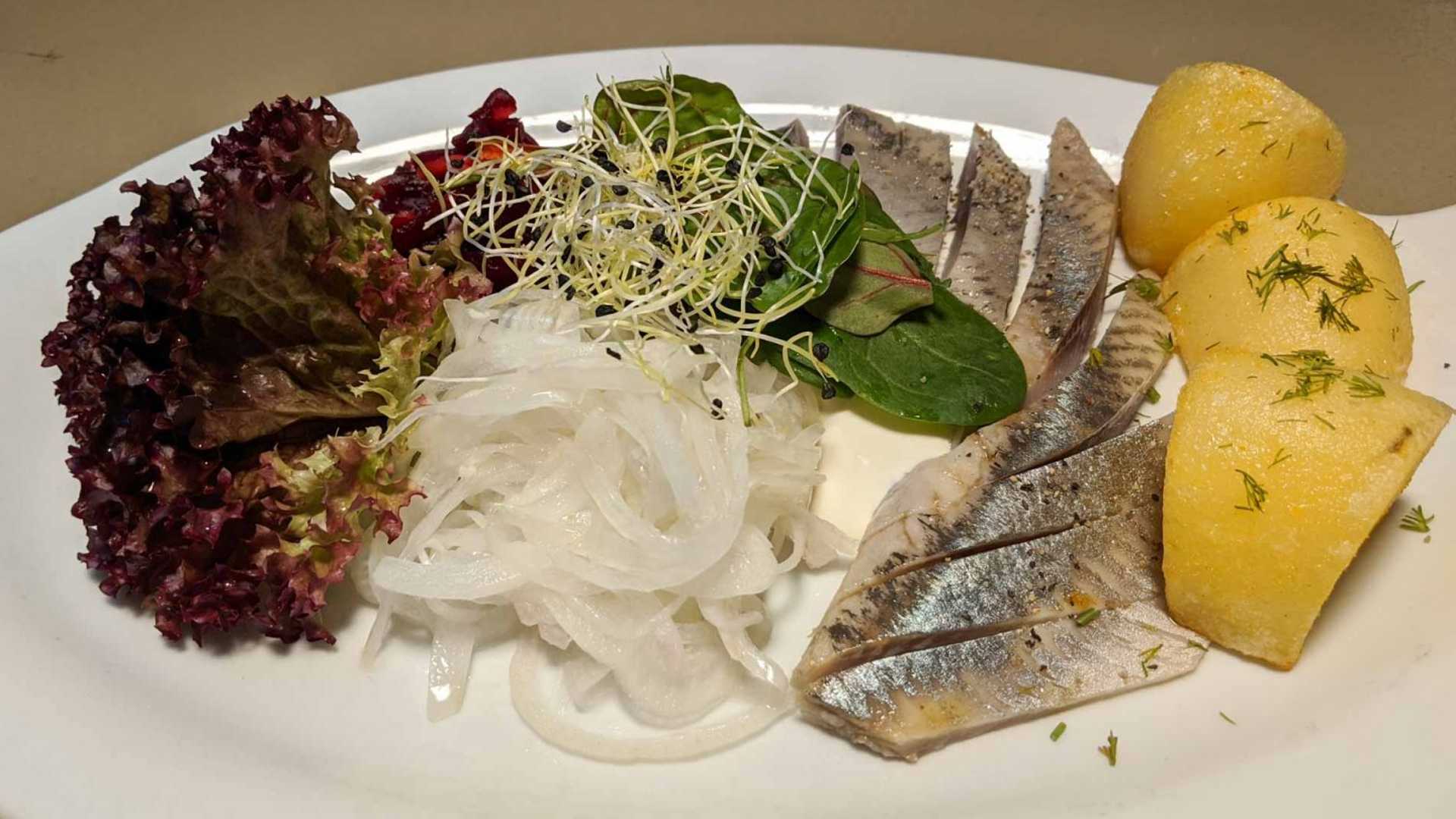“Why on earth would you eat that?” someone might ask, with their eyebrows arched in horror.
The dish most commonly in need of defense is sült. Jellied meat is enough to implode many people's interest in trying something new. However, an equally provocative but less-defended food is pickled herring. Changing someone's mind about it takes wit and ingenuity, but you could build a delectable gateway to the rest of the Estonian ethos and customs. Or at least, you'll know that person is going to be sticking around in your life.
Herringas or räim in Estonian. Clupea harengus membras in Latin. From the 1200s to the 1400s, herring was sold in ports all around the Baltic Sea. This petite silver fish would have been caught in spring and then cured for consumption later. In addition to wanting to eat herring for longer, fluctuations in availability (whether due to overfishing or the moving of spawning grounds) also prompted consumers to cure it in different ways. This included brining with a salt and water solution, or pickling, which can involve vinegar, salt, or sugar.
So it's a dish born out of necessity. A clever hack that gave us a new flavour. Put it on a plate with some boiled potatoes and sliced onion and lunch is ready. What do you do, though, if your guest is eating around the pickled herring?
The Comparison Game: In Sweden, there's surströmming. In this instance, the herring is fermented for half a year or more and canned, giving some acidity to its flavour. Once it's opened up, you can expect to singe your nostrils. You can always say “At least heeringas isn't pungent!” Don't think I'm picking on Sweden, though. I would gladly subsist on gravlax and meatballs for a month if I could get away with it.
Strength in Numbers: Tell them how many people love to tuck into the stuff from across cultures.
In Ukraine, pickled herring is among 12 non-meat foods eaten on Christmas Eve, each one symbolizing one of the 12 Apostles.
Nova Scotians eat Solomon Gundy. They'll soak the herring one day. The next day put the cut-up pieces of herring in a jar with vinegar, peppercorns, sugar, and allspice with onions layered in. And on day three, it'll go on bread with cream cheese.
Perhaps the biggest herring aficionados on the planet are the Dutch, who have been chowing down on it in large quantities since the 1400s. The most popular variety is Hollandse Nieuwe. To be given this name, the fish must consist of at least 16 percent fat. As you can see, there are plenty of people to vouch for herring!
Put it in mayonnaise: Combined with boiled beets and potatoes, onion, hard-boiled eggs, and mayonnaise, you have the classic Estonian rosolje. People eating will be so transfixed by the magenta colour and the miracle occurring on their taste buds that they won't think much about what it's made of. “It's just like potato salad” you can tell them.
Fry it: This kind of defeats the whole purpose of having pickled the herring, but, at some point it was fermented, if only to extend its window of consumption. Pass it through flour. Deep fry it in oil. Then serve it with some crispy potato wedges.
Smother it in cheese: If this individual likes anchovies on pizza, your job has become much easier. Melted cheese goes well with pretty much anything. Just cut it into smaller pieces and hide it around other toppings, and you've made a pizza estone.
Another alternative combination is to put the fish in tomato sauce, almost as if it were skumbria.
Tell them it's healthy: What if you have nothing around to pair the pickled herring with? Don't worry, there's still hope. You'll just need to use clever psychological tricks.
Remind the person that pickled herring contains plentiful amounts of omega-3 fatty acids. These will slow down the clogging of arteries and reduce blood pressure. They have anti-inflammatory properties, thereby preventing the deterioration of the brain. You can tell them, “Do it for the sake of your health!”
The real experience: Not everyone would agree that herring is Estonia's true national fish. In 2007, an article in The Wall Street Journal argued that “…few Estonians actually eat it.” This was after the Estonian National Fishery Association ran an internet opinion poll about the matter. In the article, less herring being sold in Estonia, due to the increased pollution of fishing grounds in recent years, was listed as one reason why herring might not be a suitable choice of national fish. Nevertheless, after votes were evaluated, and the debate was even brought into the Estonian parliament, Baltic herring still became the national fish.
Some might say that pickled herring is the kind of flavour you need to grow up with. Or maybe you need to be a bearded lighthouse keeper on a stormy island to enjoy it. Then again, people take pride in going out and trying all kinds of different flavours than what they're used to. Even if the person you offered it to never wants it again, at least they tried it. Though, once they try it, they'll probably be a fan for life.
This article was written by Vincent Teetsov as part of the Local Journalism Initiative.




